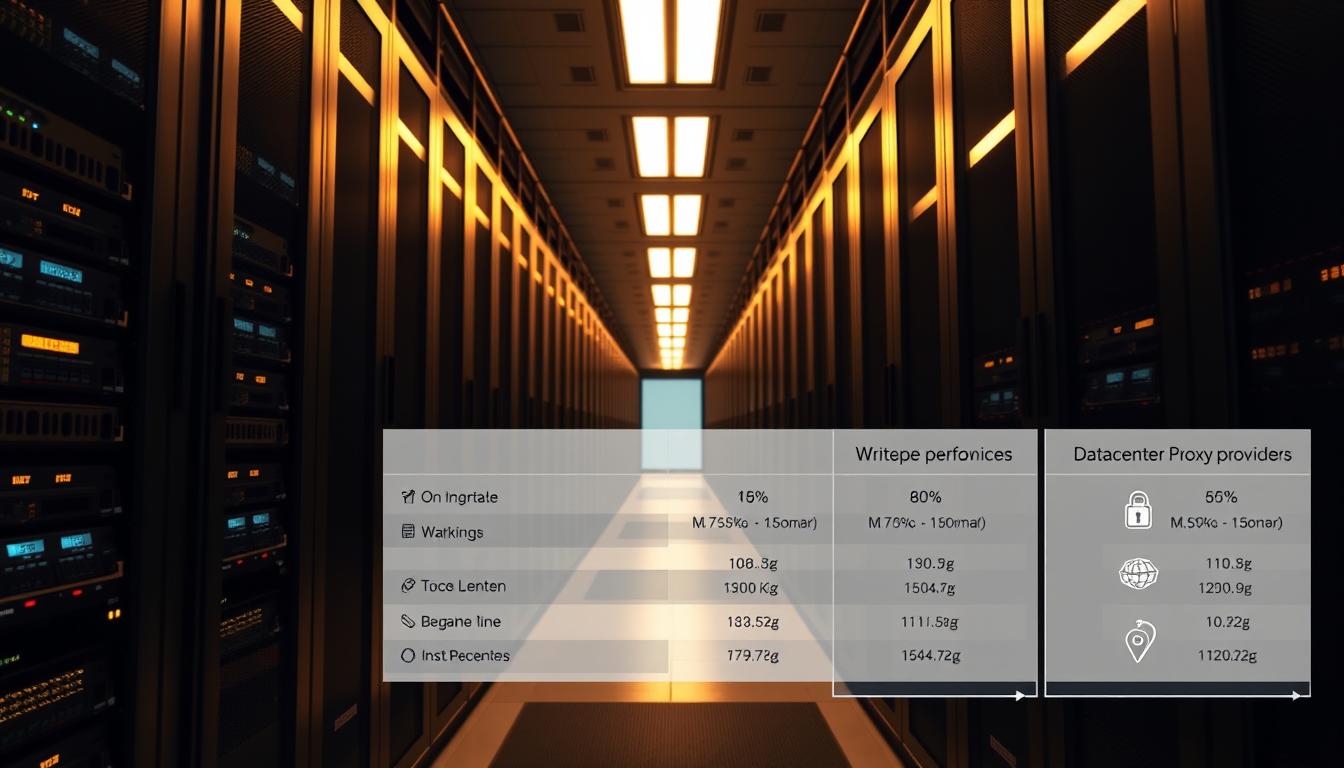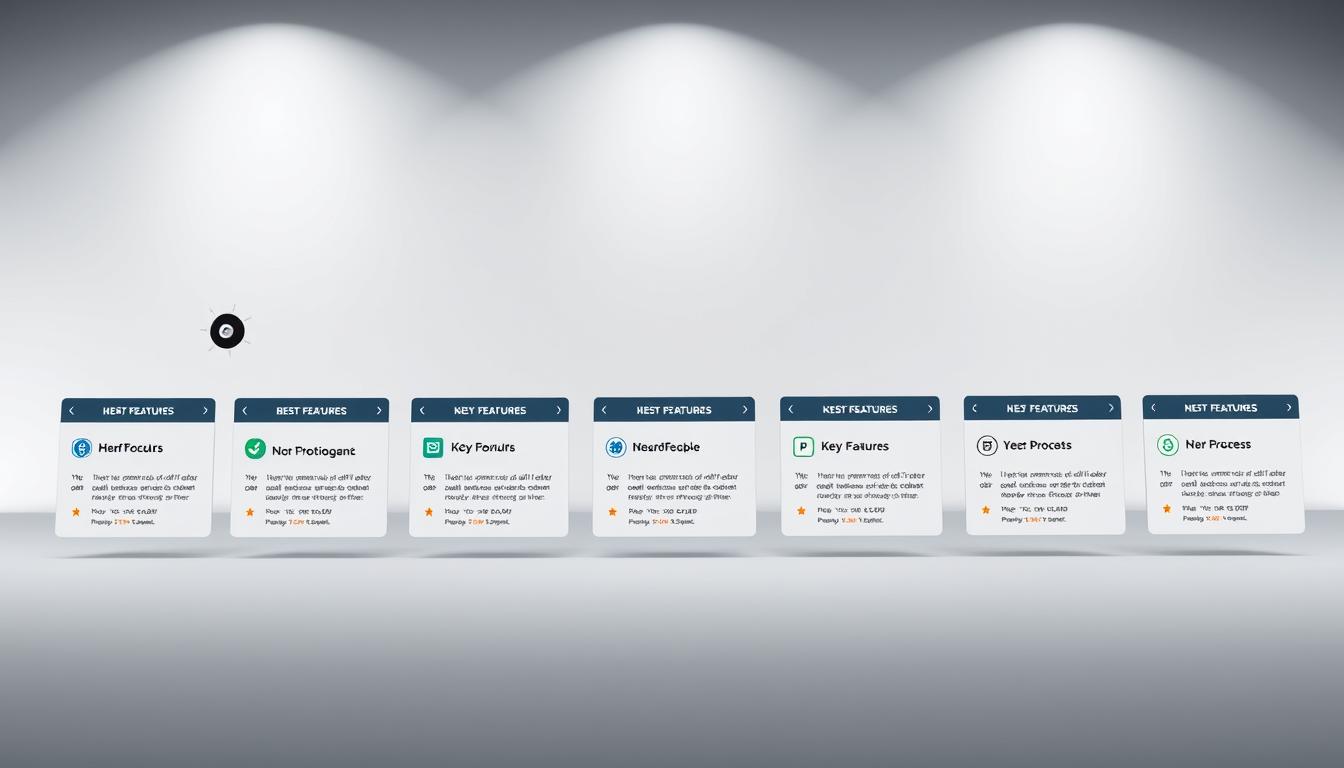FTC disclaimer: This post contains affiliate links and I will be compensated if you make a purchase after clicking on my link.
Your business is moving to the cloud, and managing it is getting tricky. You need to watch cloud usage and costs. Also, you must keep your data safe and follow rules. A good cloud management software is key for handling all this.
It helps with cloud infrastructure management, multi-cloud orchestration, and cloud resource optimization. It also manages cloud cost management, cloud security and compliance, cloud monitoring and analytics, and hybrid cloud management. But, which cloud management platform is right for you? This article will guide you to find the best tool for your cloud needs.
Key Takeaways
- Cloud management platforms (CMPs) provide comprehensive oversight and control over public, private, and hybrid cloud environments.
- Key features of CMPs include cost optimization, automated provisioning, security and compliance management, and real-time monitoring and analytics.
- Utilizing a CMP can lead to significant benefits, such as reduced cloud spending, improved operational efficiency, and enhanced security posture.
- The article will explore the top cloud management solutions, highlighting their unique strengths and capabilities to help you choose the best fit for your business.
- Factors to consider when selecting a cloud management platform include cost, scalability, integrations, and alignment with your organization’s cloud strategy.
Introduction to Cloud Management Platforms
What is a Cloud Management Platform?
A cloud management platform (CMP) is a software that helps manage cloud resources. It works with public, private, and hybrid clouds. It has features like monitoring, cost control, automation, security, and compliance.
These platforms make cloud management easier. They help improve efficiency and keep control over cloud infrastructure.
Key Features and Capabilities
Cloud management platforms have many features to manage cloud environments well:
- Cloud Resource Monitoring: CMPs give real-time views of cloud resource use and performance. This helps businesses make better decisions about resource use.
- Cloud Cost Optimization: CMPs have tools for tracking and optimizing cloud spending. This ensures efficient use of resources and saves money.
- Cloud Automation: CMPs automate tasks like setting up and scaling cloud resources. This makes IT operations smoother and reduces manual work.
- Cloud Security and Compliance: CMPs include security features like encryption and access control. They also help follow industry rules.
Using these features, organizations can work better in the cloud. They can manage costs, improve efficiency, and keep data safe and compliant.

Benefits of Using Cloud Management Software
Cloud management software brings many benefits to companies looking to improve their cloud setup. It helps with Cloud Cost Optimization by showing where money is being spent. This leads to better Cloud Resource Management and more efficient use of resources.
These tools also make scaling and setting up resources easier. This means lower costs and better Improved Cloud Efficiency.
Cloud management software also makes managing the cloud easier. It cuts down on manual work through Streamlined Cloud Processes and Cloud Automation Benefits. It handles tasks like setting up, scaling, and security updates. This makes operations more efficient and agile.
Cost Optimization and Resource Allocation
Cloud management platforms give companies a clear view of their cloud use and costs. They can spot unused resources and adjust their cloud setups. This leads to better Cloud Cost Optimization and more value from cloud investments.
Simplified Processes and Improved Efficiency
Cloud management software makes cloud management easier by automating tasks. It integrates different cloud services. This reduces manual work, cuts down on mistakes, and speeds up cloud application delivery.
Companies can then focus on important tasks instead of getting bogged down by Streamlined Cloud Processes. This leads to Improved Cloud Efficiency.

“Cloud management platforms are essential for organizations leveraging multiple cloud services. They provide the visibility, control, and automation needed to effectively manage cloud resources and costs.”
Top Cloud Management Solutions
More businesses are using cloud computing. This makes cloud management software very important. The Best Cloud Management Platforms, Top Cloud Management Software, and Leading Cloud Management Tools help a lot. They offer many features to improve cloud use, make things run smoother, and save money.
CloudZero is a great example. It helps see cloud costs clearly. This way, businesses can find and cut waste, saving up to 50-60% on cloud costs.
nOps is another top cloud management software. It has helped AWS users cut costs by up to 50%. nOps gives tools for better cloud use and spending control.
CloudHealth by VMware is a big cloud management platform. It has many tools for managing and optimizing cloud use. CloudHealth helps solve problems like not seeing costs clearly and complex pricing.
Terraform by HashiCorp is great for an infrastructure as code approach. It uses a special language to manage cloud resources. This makes setting up and managing cloud resources easier.
OpenStack is another key cloud management platform. It’s open-source and helps build and manage private and hybrid clouds. It’s a big help for cloud management.
CloudBolt is a hybrid cloud management platform. It helps IT departments manage private and public clouds. Its easy-to-use interface and flexibility make it a good choice for many businesses.

The need for cloud management software is growing. There are many solutions available, each with its own strengths. By picking the right top cloud management tools, businesses can make their cloud use more efficient and save money.
Azure Management Tools
Microsoft’s Azure Cloud Management tools help manage Azure resources well. They cover automation, deployment, security, and Azure Cost Optimization. Services like Azure Policy and Azure Advisor help follow rules and use resources wisely. Tools like Azure Monitor and Azure Log Analytics give deep insights into performance.
But, the Microsoft Azure Management Tools mainly work for Azure. Companies wanting to manage many clouds might need other tools too.
Strengths and Limitations
- Robust Azure resource governance capabilities through services like Azure Policy and Azure Advisor
- Comprehensive performance monitoring and analytics with Azure Monitor and Azure Log Analytics
- Tight integration with other Azure services for streamlined management
- Limited support for multi-cloud environments, primarily focused on Azure-based resources
- Requires a deeper understanding of Azure-specific tools and terminology for effective utilization
| Azure Management Tool | Key Capabilities | Limitations |
|---|---|---|
| Azure Policy | Enforce compliance, govern resources, and manage risk | Limited to Azure resources, no multi-cloud support |
| Azure Advisor | Provide personalized best practice recommendations | Focused on Azure-specific optimizations |
| Azure Monitor | Unified performance monitoring and insights | Primarily for Azure-based resources and services |
| Azure Log Analytics | Centralized log management and advanced analytics | Limited multi-cloud visibility and integrations |

The Azure Management Tools are great for Azure resources. But, companies with many clouds might need more tools to meet their needs.
Flexera Cloud Management Platform
The Flexera Cloud Management Platform is a top choice for managing your cloud environments. It helps you save money, improve control, and work better with DevOps. This platform has many features to help you manage your cloud spaces well.
Key features of the Flexera Cloud Management Platform include:
- Discovery and inventory management across cloud, virtual, and physical environments
- Template-based provisioning for rapid, standardized deployments
- Orchestration and automation to streamline cloud operations
- Operational monitoring and management for public, private, and hybrid clouds
- Flexera Cloud Management for comprehensive governance and security
- Cost optimization and budgeting tools to control Cloud Cost Optimization
- Seamless DevOps Integration for improved collaboration and visibility
This platform works well with many cloud services like AWS, Azure, and Google Cloud. It helps manage your cloud spaces well, no matter where they are.
| Key Flexera Cloud Management Platform Features | Benefits |
|---|---|
| Cloud Cost Optimization | Identify and eliminate waste, forecast expenditures, and optimize resource utilization |
| Governance and Compliance | Enforce security policies, manage access, and maintain regulatory compliance |
| DevOps Integration | Integrate with CI/CD pipelines, improve visibility, and enhance collaboration |
| Hybrid and Multi-Cloud Support | Manage your entire cloud landscape, including public, private, and on-premises resources |
The Flexera Cloud Management Platform is great for all kinds of organizations. It helps you get the most out of your cloud and work more efficiently and cost-effectively.
Best Cloud Management Software
Cloud computing can be hard to manage for companies. But, the best Top Cloud Management Software makes it easier. These Comprehensive Cloud Management Platforms have many features. They help with cost, resources, security, and more. This lets companies keep control and see what’s happening in their cloud environments.
Enterprise-Grade Cloud Management Solutions help cut down on cloud waste. This is key for companies this year, says the FinOps Foundation. These tools find cost problems fast and help understand cloud spending. This helps businesses save money.
| Cloud Management Software | Key Features | Cost Savings |
|---|---|---|
| CloudZero | Granular cost intelligence, real-time anomaly detection, FinOps support | Up to 50-60% on cloud costs |
| nOps | AI-powered FinOps automation, $1.5 billion in cloud spend processed | Up to 50% cost reduction for AWS users |
| IBM Cloud Orchestrator | End-to-end service deployment, cloud environment monitoring and management | N/A |
These Comprehensive Cloud Management Platforms do more than save money. They make things simpler, more efficient, and safer. With the best Top Cloud Management Software, companies can see their cloud better. They can work better and keep their cloud systems healthy.
“Eliminating cloud waste can help organizations save up to 50-60% on cloud costs.”
Choosing the right Enterprise-Grade Cloud Management Solutions is important. Look at the features, how well it fits with your cloud, and how easy it is to use. By picking carefully, you can find the best fit for your cloud needs.
Nutanix Cloud Manager
Nutanix Cloud Manager (NCM) is a top-notch cloud management platform. It makes managing hybrid and multi-cloud environments easier. Over 25,000 customers trust NCM for its advanced cloud management features.
NCM’s core features include cloud provisioning and orchestration. It automates tasks, finds performance issues early, and manages apps smoothly. It also helps with cost and security across different clouds.
NCM is great at saving costs. It uses machine learning to size resources right and make smart buys. Users can also deploy clouds easily through the Nutanix Marketplace or the platform’s interface.
NCM shines in managing hybrid and multi-cloud setups. It automates setting up cloud architectures and managing apps across clouds from one place. This makes using both on-premises and public clouds easier.
NCM is available in different forms, like on-premises and SaaS. It meets the needs of all kinds of organizations. If you want to improve your cloud management, Nutanix Cloud Manager is a great option.
IBM Apptio Cloudability
IBM’s Apptio Cloudability is a top cloud cost management tool. It helps companies manage their cloud spending better. It combines data from different systems to give a clear view of costs.
Apptio Cloudability focuses on FinOps. It connects finance, engineering, and product teams. It uses advanced analytics to cut costs and align tech spending with business goals.
Streamlining Cloud Cost Management
Apptio Cloudability makes cloud cost management easier. It automates tasks and offers easy-to-use dashboards. Its features include:
- Comprehensive cost visibility and allocation
- Actionable recommendations for optimization
- Commitment management and right-sizing
- Budgeting and forecasting capabilities
- Integration with various cloud platforms and tools
With Apptio Cloudability, companies can understand their cloud spending better. They can find ways to save money and make smart decisions about their cloud use.
| Key Benefits of Apptio Cloudability | Features |
|---|---|
|
|
IBM Apptio Cloudability is a key tool for managing cloud costs. It helps companies make the most of their cloud investments and aligns tech with business goals.
“IBM Cloudability, IBM Targetprocess, and IBM Apptio are top-rated on TrustRadius, a platform for business technology reviews and ratings.”
HashiCorp Terraform Enterprise
HashiCorp Terraform Enterprise is a top Infrastructure as Code (IaC) platform. It makes managing multi-cloud and hybrid cloud environments easier. It uses HashiCorp Terraform’s declarative syntax for centralized provisioning and collaboration.
Infrastructure as Code Approach
Terraform Enterprise uses the Infrastructure as Code approach. It lets you define cloud resources in a human-readable language. This makes version control, collaboration, and consistent changes possible.
It manages servers, Kubernetes clusters, networking, and serverless functions. Terraform Enterprise is a single platform for cloud infrastructure management.
- Declarative syntax for infrastructure provisioning
- Enterprise-grade features like state management, user access control, and version control
- Simplified collaboration and governance for large organizations with complex cloud footprints
Terraform Enterprise works well with AWS, Microsoft Azure, and Google Cloud. It lets you manage resources across multiple clouds. It also has advanced features like dynamic secret management and policy enforcement.
“Terraform Enterprise empowers our team to maintain a consistent, secure, and scalable infrastructure across our multi-cloud environment. The Infrastructure as Code approach has significantly improved our deployment efficiency and reduced the risk of manual errors.”
Whether you’re small or large, Terraform Enterprise streamlines cloud management. It helps with cost optimization, compliance, and teamwork.
Harness Cloud Cost Management
Harness Cloud Cost Management is a powerful tool for managing cloud costs. It offers detailed visibility and smart automation. It finds and fixes cost issues by adjusting resources or turning off unused servers.
It uses AI and machine learning for AI-Powered Cost Optimization. The platform works with CI/CD pipelines and ticketing systems. This makes Cloud Cost Optimization Automation part of your workflow. It ensures cloud costs are managed well, from start to finish.
Comprehensive Cost Visibility and Optimization
Harness Cloud Cost Management shows how much cloud resources cost. It breaks down costs by used, idle, or unused resources. It also suggests ways to save money, like resizing resources or finding the cause of high costs.
It has tools for finding unusual spending and planning budgets. Harness helps avoid surprise cloud costs. This way, organizations can better manage their cloud spending.
| Feature | Description |
|---|---|
| Cost Visibility | Detailed cost data from cloud providers, with granular visibility into utilized, idle, and unallocated resources |
| Optimization Recommendations | Savings recommendations with justifications, including rightsizing and root cause analysis |
| Anomaly Detection | Proactive alerts for spending anomalies to avoid unexpected costs |
| Budgeting and Forecasting | Budgeting tools and cost forecasting to plan and manage cloud expenditure |
| Automation | Seamless integration with CI/CD pipelines and ticketing systems for automated cost optimization |
With Harness Cloud Cost Management, organizations can control their cloud costs. They can use resources better and spend less on the cloud. This is thanks to advanced analytics, smart suggestions, and automated actions.
Morpheus Data
In today’s fast-changing cloud world, companies are moving to hybrid and multi-cloud environments. They want to use the best of each cloud. But, managing these different clouds can be hard. Morpheus Data is a top Cloud Management Platform (CMP) that helps solve these problems.
Morpheus Data stands out because it works with many cloud services. It supports AWS, Microsoft Azure, Google Cloud, and VMware, and more. This lets companies keep an eye on all their hybrid and multi-cloud environments easily.
The platform is easy to use. It lets IT teams and business users manage cloud resources without trouble. This makes companies more agile and in control. Morpheus Data also uses Infrastructure as Code (IaC) tools to make things run smoother and cut down on mistakes.
The Gartner Critical Capabilities for Cloud Management Platforms report says Morpheus Data is the best for certain tasks. It has great features and works with many clouds. This makes it a top pick for companies looking for a good cloud management solution.
“Morpheus has more 5-Star Peer Insight reviews than any other MQ CMP vendor, reflecting its strong customer satisfaction and continued innovation.”
As more companies need to manage hybrid and multi-cloud environments, Morpheus Data is leading the way. Its fresh approach and focus on making cloud management easier make it a key player in the Cloud Management Platform market.
Spectro Cloud Palette
Spectro Cloud Palette is changing the cloud computing world. It’s a top Kubernetes management platform. It makes managing multiple clusters, containers, and edge deployments easier.
Spectro Cloud’s Palette management platform is rated the highest enterprise Kubernetes management platform by customers. It has won many awards. Analysts also see it as a leader in Kubernetes management.
Palette’s main features are:
- Over 50 supported components for easy stack building.
- Top security controls, like token-based access and encryption.
- A decentralized architecture for better performance and resilience.
- A Virtual Machine Orchestrator for managing VMs and containers.
- Support for many environments, including bare metal and cloud services.
Spectro Cloud Palette can handle hundreds of thousands of clusters. It’s perfect for big enterprises. Its easy interface and automated workflows help DevOps teams manage containers better.
| Deployment Statistics | Challenges Faced |
|---|---|
| Enterprises Deploying Kubernetes to the Edge Today: Not specified | Concerns About Security: Highlighted as a challenge |
| Expected Growth in Edge Kubernetes in the Next 12 Months: Expecting “strong” growth | Connectivity Issues: Organizations are challenged by the lack of connectivity |
| – | Operation and Cost Concerns: Organizations express concerns about day 2 operations and field engineering costs |
Spectro Cloud Palette tackles these challenges. It offers a complete solution for Kubernetes management. Its focus on security and ease of use makes it a top choice for container orchestration.
“Spectro Cloud Palette is a game-changer in the world of Kubernetes management. Its intuitive interface, robust security features, and decentralized architecture make it an invaluable tool for DevOps teams managing complex container deployments.”
Apache CloudStack
In the world of cloud computing, Apache CloudStack is a top choice. It’s an IaaS (Infrastructure-as-a-Service) cloud computing platform. It helps organizations manage big cloud environments well.
Apache CloudStack is special because it works with many virtualization technologies. This includes VMware, KVM, XenServer, and Xen Cloud Platform. It lets businesses use what they already have and add CloudStack to their plans.
Key Features and Benefits of Apache CloudStack
- It has great cloud orchestration, including compute, network, and user management.
- It can handle thousands of servers across many data centers.
- It works well with AWS EC2 and S3, making hybrid clouds easy.
- It has a user-friendly web interface, command-line tools, and RESTful API.
- It makes cluster management easy and works well with Kubernetes.
- It’s open-source, avoiding lock-in and saving money.
Apache CloudStack is open-source and has lots of features. It helps organizations manage their clouds better. It’s good for public, private, or hybrid clouds. Apache CloudStack is a flexible and reliable choice for businesses.
Choosing the Right Cloud Management Solution
When looking at Evaluating Cloud Management Software for your company, it’s key to think about a few important things. These will help you find the best Key Criteria for Cloud Management Platforms. By looking at these criteria, you can choose the right Selecting the Best Cloud Management Tool for your business and cloud setup.
Key Factors to Consider
Scalability: Make sure the cloud management platform can grow with your cloud and user needs. It should keep performance high.
Security and Compliance: Look for strong security like multi-factor authentication, encryption, and standards like HIPAA, PCI-DSS, and GDPR.
Performance Monitoring and Root Cause Analysis: Check if the platform gives deep insights into your cloud resources. This helps you find and fix performance issues fast.
Integration Capabilities: See how well the platform works with your current tools and services. It should make your cloud workflow smooth and efficient.
User-Friendliness: Think about the platform’s design and how easy it is to use. This affects how well your team will adopt and use it.
Automation and Orchestration: Find a platform with strong automation and orchestration. This makes managing your cloud easier and more efficient, reducing the need for manual work.
Vendor Support: Check the support and resources from the cloud management platform vendor. Look for good documentation, training, and customer service.
| Criteria | Importance | Considerations |
|---|---|---|
| Scalability | High | Ability to accommodate growth in cloud infrastructure and user demands |
| Security and Compliance | High | Robust security features and industry-standard compliance |
| Performance Monitoring | High | Visibility into cloud resources and root cause analysis |
| Integration Capabilities | Medium | Seamless integration with existing tools and services |
| User-Friendliness | Medium | Intuitive interface and ease of use |
| Automation and Orchestration | High | Streamlined cloud management processes and reduced manual intervention |
| Vendor Support | Medium | Availability of documentation, training, and responsive customer service |
By carefully looking at these key factors, you can make a smart choice. You’ll find the cloud management solution that fits your company’s needs and cloud setup.
Conclusion
Cloud management platforms are key for better cloud use, saving money, and keeping control. They help companies work better, stay safe, and make smart cloud choices. It’s important to pick the right platform for your business and cloud setup.
This guide looked at top cloud management tools like AWS, Azure, Google Cloud, IBM Cloud Pak, and VMware. Each has special features for managing costs, working with many clouds, automating tasks, and watching over your cloud. These tools help companies manage their cloud resources well.
Choosing the right cloud management software depends on your company’s needs, cloud setup, and future plans. The right choice can make your cloud work better, save money, and help your business grow in the digital world.








